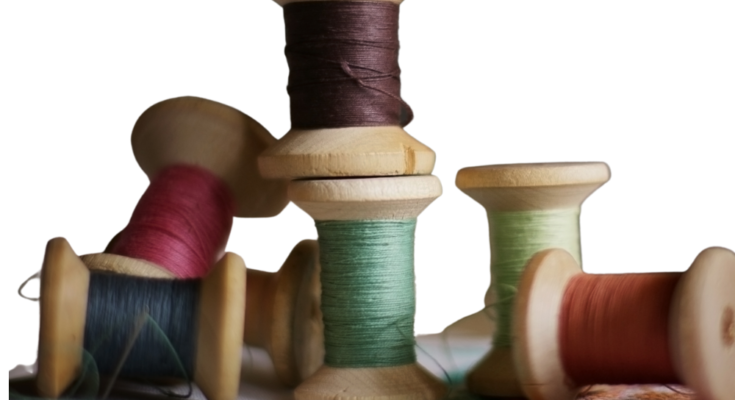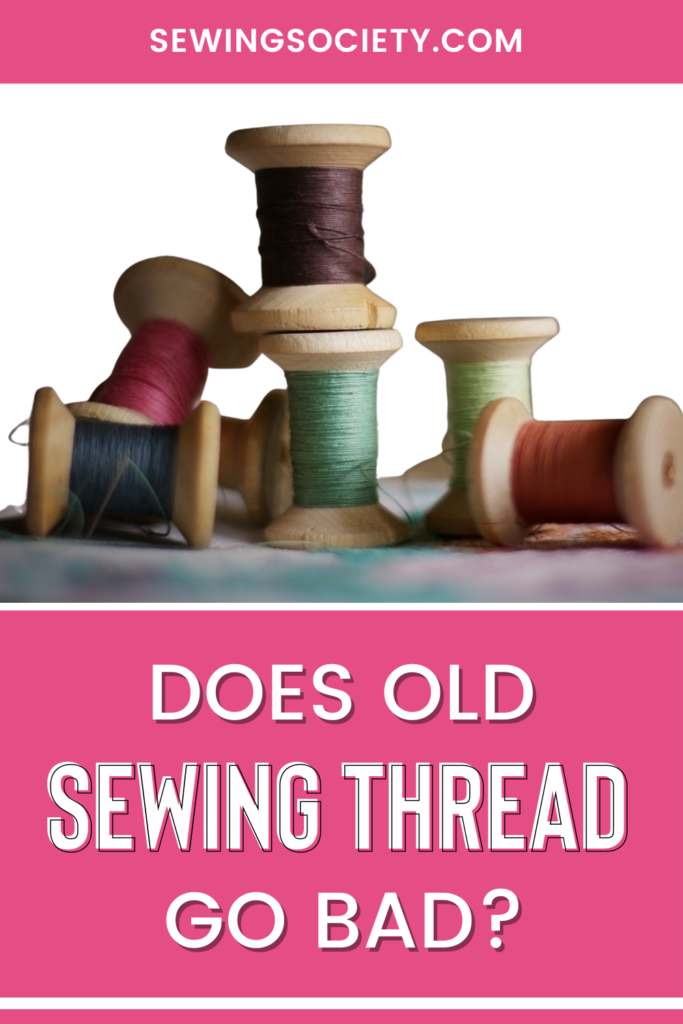Disclosure: This post may contain affiliate links. I earn a small commission when you click a link and make a purchase. Thanks for supporting SewingSociety.com!
Have you ever received a box of old sewing notions from a neighbor, friend, or family member?
I know I have!
It’s hard for me to turn down fabric and notions when someone is getting rid of them…
While Grandma’s sewing machine and shears are probably good for another generation or two, the thread is questionable. Have you ever wondered if sewing thread goes bad?
Here are some guidelines to consider when deciding whether to use old thread or throw it out.
Factors in Thread Longevity
People who collect old textiles, such as quilts and clothing, are careful to protect them from sunlight, dirt, and abrasion. Valuable textiles are kept in dark, cool places, and are rarely handled, even by gloved conservators.
Thread is also a textile, so if it has not been stored properly, it may not be good. Thread that has been stored in a box in a closet will be in better condition (stronger and cleaner) than thread stored in the open on a thread rack near a window.
Natural fibers are vulnerable to insect damage and to either dry rot or mildew, depending on the humidity of the storage space. Also, dime-store polyester threads tend to shed excess lint, since they are not spun as well as modern core-spun threads or microfiber polyesters.
How to Test Sewing Thread
Assuming you don’t have access to a modern engineering lab, you can still do some basic checks of your old thread. Hold a length of thread taut with both hands. Pull your hands apart slowly (don’t jerk) to see if the thread stretches and the fibers separate before the thread breaks. If so, the thread is a “no go.” If you get a clean snap (or you cannot break it at all) you can most likely use the thread without a problem.
Long-staple polyester thread and cotton-wrapped polyester core threads will stay stronger longer than 100% cotton, in general.
Should I Use Old Thread or Throw It Away?
While your old thread may be fine to use, consider the project in which it will be used. Do not risk new fabric and trim with questionable thread.
Here are some ideas on what to do with old thread:
- Use it for hand basting.
- Use it for decorative stitching.
- Fill a wide-mouth Mason jar with spools for display on a table or library shelf.
- Use old wooden spools in crafting projects.
Now, don’t be hasty to throw out old thread…
According to Bob Purcell, our grandchildren will be able to use the high quality threads made today for many years to come. However, the same is not true of threads manufactured years ago. Relatively new ‘old’ thread can be used, as can thread stored carefully; however, thread is an important component of any sewing project and cutting corners may not be the wisest course of action.
Also Read: Types of Thread: Choosing the Right Thread for Your Sewing Project
Have you ever used old thread? How did it go? Leave a comment below.
Share this post on Pinterest!






Those old wooden spools of thread are so pretty, but….I don’t use them on my projects as they are too brittle.